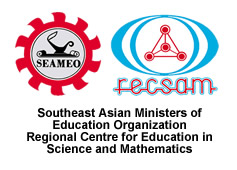Learning Science and Mathematics (LSM) Journal Vol.1, Issue 15, pp 119-148
Development of Learning Materials in Environmental Science Based on Intellectual Capacity, Personal, and Civil Responsibility Assessments
Mae Angeline Tad-y Tajolosa
Received first draft 15 January 2020. Received reports from first (30 March), second (5 April) and third (8 July) reviewers. Received revision 30 September
Accepted: 27 November 2020.
Published: 30 December 2020
Abstract
In educational institutions, the development of learning materials is regarded as one of the major aspects that would promote student learning and help in the achievement of academic goals and objectives. To enrich the system of education, research need to be conducted and innovative methods to be promoted. The development in learning materials is brought about on the basis of number of aspects. In this study, the intellectual capacity, personal and civil responsibility on environmental science of the fourth year Bachelor of Secondary Education major in Biological Science students in one of the universities in Iloilo, Philippines were assessed using the validated researcher-made instruments based on the contents of the college readiness standards as described in Commission on Higher Education Memorandum Order (CMO) No. 20 series of 2013. Intellectual capacity gaps were identified by means of least test scores and less than half of the students got the test items correctly from the different topics of the subject while the personal and civil responsibility were noted from the least mean results of the answers of the participants in the questionnaires. Consequently, the identified gaps of the assessments serve as basis for the development of appropriate learning materials. Results revealed that the students had moderate level of intellectual capacity on the contents of environment and its components, ecological concepts, biodiversity, sustaining resources and environmental crises as well as a low level on environmental laws and management. For the personal and civil responsibility, the students showed moderately desirable attitudes toward accessing, validating, and sharing of environment-related information, a high and low level of participation in an individual and agency led initiated environment-related activities respectively. Among the identified gaps in intellectual capacity include the environmental management and laws; low level of awareness on various environment- related programs and plans of local government units, low level of participation in some environmental related activities initiated by agencies and unexplored potential of social media were descriptively statistically described as significant in the personal and civil responsibility. Correcting the gaps of these variables is important because it could improve competence and performance outcomes of the students. An Analysis, Design, Development, Implementation and Evaluation (ADDIE) model was utilized in developing the appropriate learning materials which were firmly woven based on solid evidence of the gaps identified in the intellectual capacity, personal and civil responsibility of the learner relative to this subject. Conclusively, the data pertaining to these capacities of students on Environmental Science is highly imperative to attain the penultimate objective of teaching this subject effectively.
Keywords: Environmental Science; Environmental awareness; Attitudes; Development; Learning materials
© 2020 SEAMEO RECSAM LSM Journal
More Article
...

